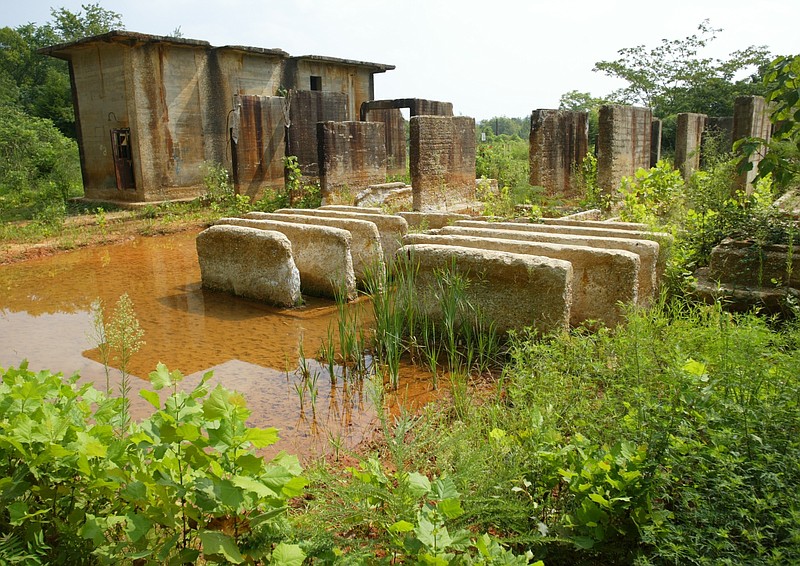Tuesday, Chattanooga City Council members will be asked to vote on a resolution to declare Chattanooga a World War II Heritage City.
The city's history is not as intertwined with the second world war (1941-1945) as it is with the country's own Civil War (1861-1865), but the former was not fought on these environs as the latter was.
Nevertheless, Chattanooga certainly fits the National Park Service's American World War II Heritage Cities program. The criteria include contributions by a city and its environs to the World War II home-front war effort and achievements to preserve the heritage and legacy of the city's contributions to the war effort and to preserve World War II history.
We hope the city council will endorse the effort, which is a competitive process and has as a national goal to "recognize and ensure the continued preservation and importance of the history of the United States involvement in World War II."
The city's nomination must be submitted by Aug. 31. Only one city per state or territory may be so recognized. No date has been given as to when the city might hear if it earns the designation.
We don't know exactly what supporting material the city's submission package will include, but any of the following would be relevant among Chattanooga contributions to the war effort:
- In the early stages of the conflict, Tennessee servicemen were inducted at Fort Oglethorpe, Georgia, just south of Chattanooga. The U.S. War Department, in July 1942, constructed a group of buildings on Barnhardt Circle at the fort for a provost marshal general's school. Additional classrooms also spilled over into the Chickamauga Battlefield area, which had been transferred from the War Department to the National Park Service less than a decade earlier.
- The school was short-lived, but Fort Oglethorpe in 1943 became the home of the newly established Women's Army Corps' Third Training Center. The center, capable of housing more than 9,000 personnel, trained around 50,000 over the duration of the war. Among those were the 6888th Postal Battalion, the only all-Black WAC unit to deploy overseas.
- The Volunteer Army Ammunition Plant (VAAP), encompassing much of the area today known as Enterprise South, was a government-owned, contractor-operated munitions plant that was authorized Aug. 1, 1941, constructed in 1941-1943, operated (initially) from July 1942 to August 1945 and manufactured trinitrotolulene (TNT). Stone and Webster Engineering Corp. of New York City was given the contract for its design and construction, which eventually included 433 buildings. Hercules Powder Co. of Wilmington, Del., was designated the operating contractor. By the time of the plant's WWII close in 1945, it had produced 800 million tons of TNT in addition to several of the raw materials required for its manufacture.
- Chattanooga was second behind Memphis among Tennessee's four largest cities by value of war supply contracts awarded between June 1940 and September 1945. Among all U.S. cities, it ranked 74th, with Memphis 66th, Nashville 82nd, and Knoxville 104th. Locally based businesses and the war- related goods they manufactured included Air Products Inc., portable oxygen generators; Cavalier Corp., ammunition boxes; Chattanooga Implement and Manufacturing Co., 60 mm shells; Chattanooga Stamping and Enameling Co., tank shoes, gas cans and anti-tank mines; Mohawk Rubber Co., rubber; Southern Ferro-Alloys Co., ferro-silicon; Superheater Co./Combustion Engineering Co. Inc., steam generating equipment, boiler heaters and marine boilers; Tennessee Products Co., coke (refined coal); and Wheland Co., guns, artillery shells.
- American Lava, another Chattanooga plant, apparently manufactured components used in the laboratories at Oak Ridge, Tenn., during the Manhattan Project, according to correspondence by David Lilienthal, one of the early directors of the Tennessee Valley Authority. Meanwhile, Chattanooga Medicine Co. (later Chattem) - according to the Tennessee Encyclopedia - converted its manufacturing during the war and became the nation's largest producer of K-rations and a major supplier of ammonia.
- In addition to munitions and war-related products, the Chattanooga-based Coca-Cola bottling company and Chattanooga Bakery made sure millions of soft drinks and Moon Pies were in the hands of service personnel all over the world.
As to the city's achievements to preserve World War II history, among other things, the popular Coolidge Park is named for the recently deceased WWII Medal of Honor recipient Charles H. Coolidge, and the Charles H. Coolidge Medal of Honor Heritage Center at Aquarium Plaza honors the exploits of the Signal Mountain native and other Medal of Honor recipients during World War II and all U.S. wars.
In Fort Oglethorpe, the 6th Cavalry Museum preserves the history of the U.S. 6th Cavalry Regiment, which was stationed at the military installation in Fort Oglethorpe through 1942.
We've just touched the surface on the efforts of Chattanooga and its environs during the war, but we hope one day we'll be able to add the Heritage City designation to our storied history.
